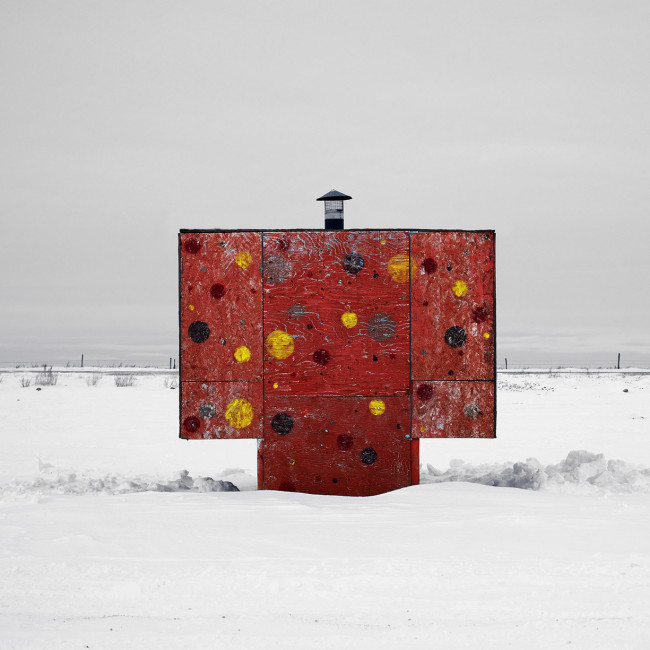
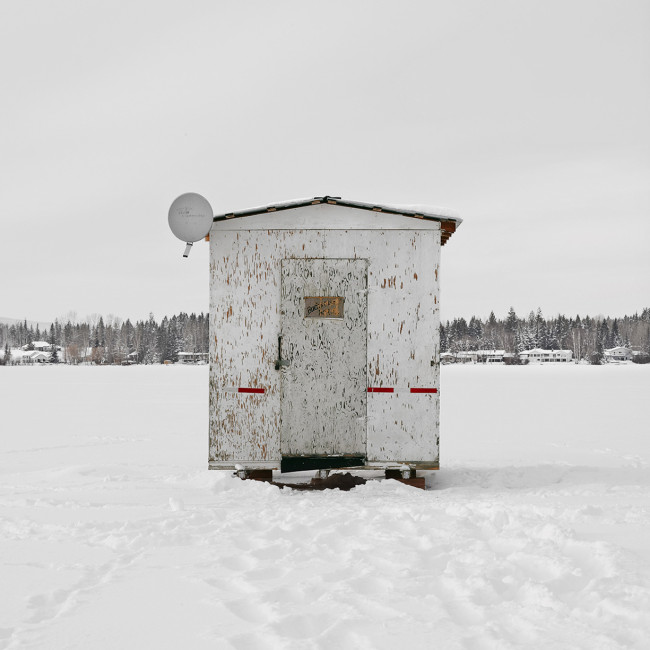
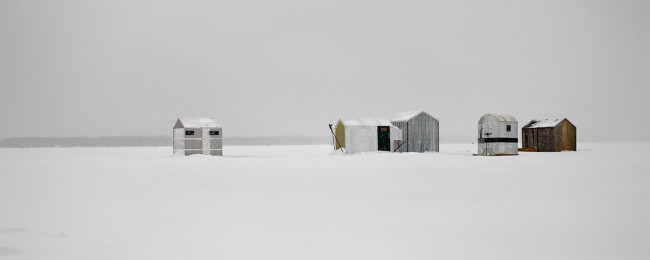



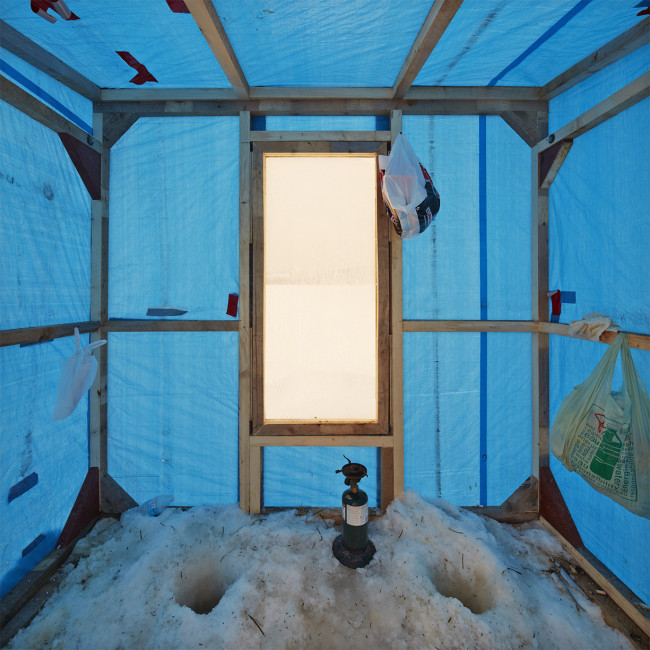
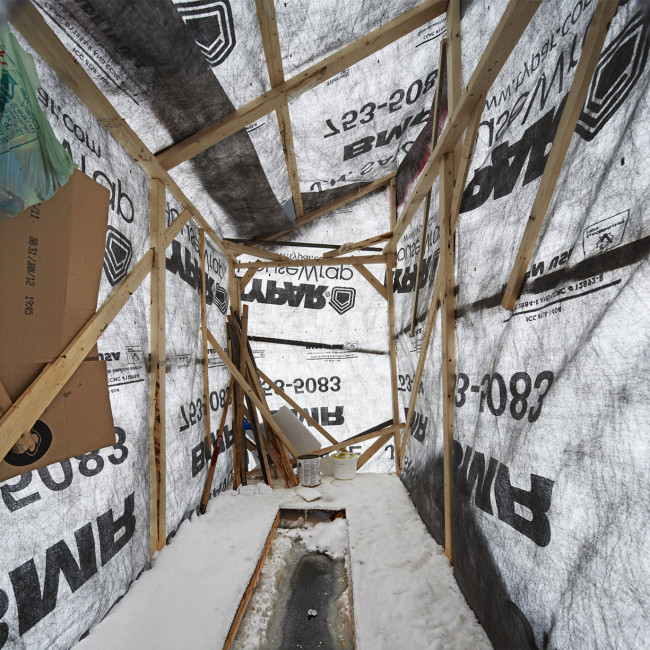
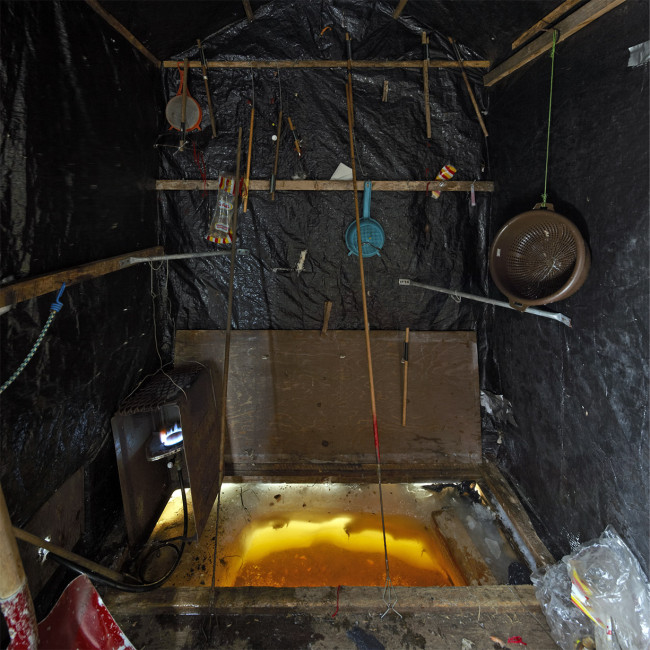
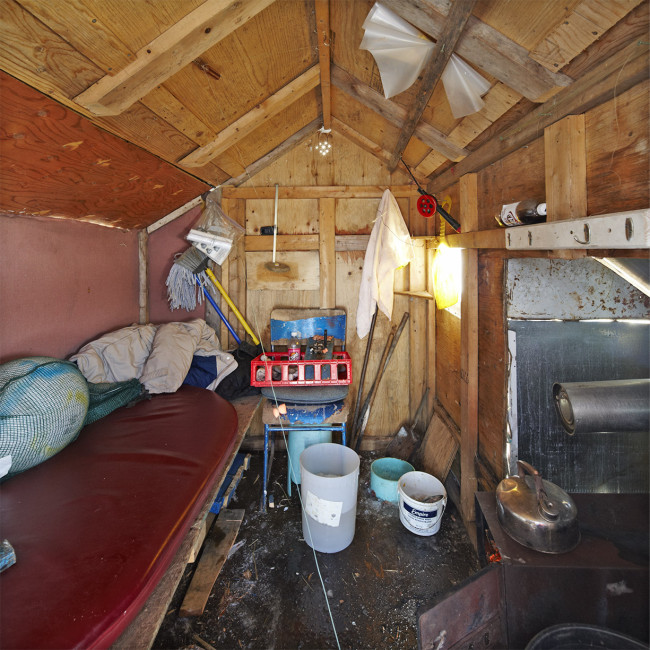

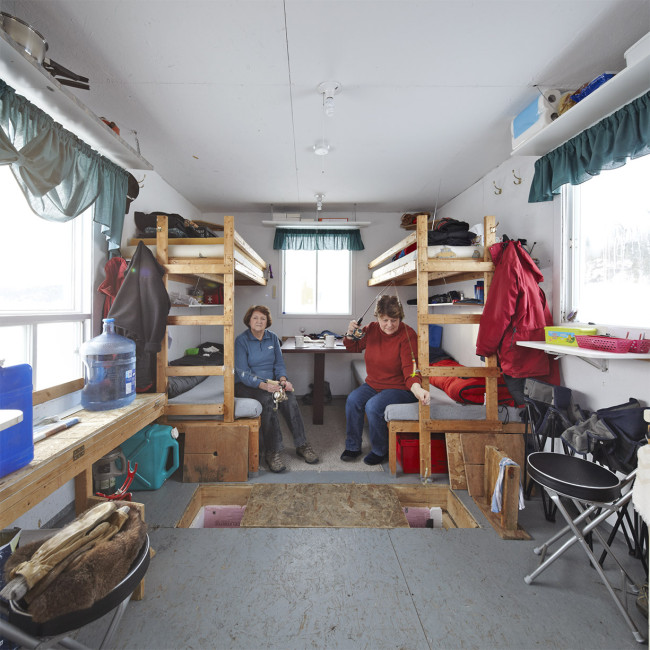
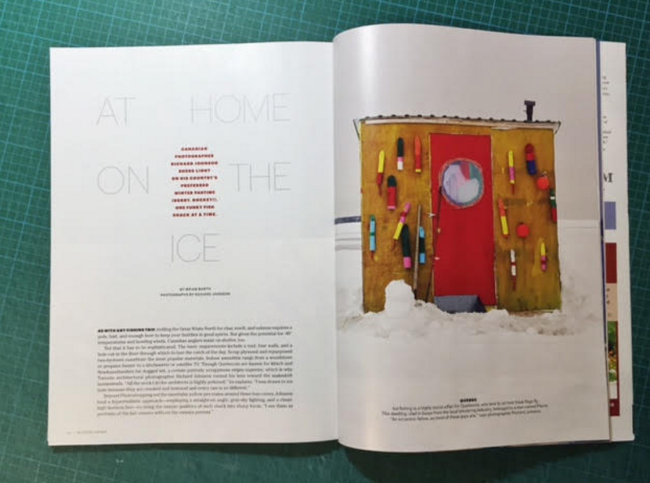
Modern Farmer
Creative Director: Maxine Davidowitz
Photography Director: Lila Garnett
Photographer: Richard Johnson/Ice Huts
How long has it taken you to go from coast to coast in Canada for this body of work, and do you add to it each year?
I knew there was a story to be told in 1991 when I was first introduced to the ice fishing community on Lake Timiskaming, bordering Ontario and Quebec. The idea percolated for many years and in winter 2006-2007 I decided to get out and investigate further. The logical starting point was just north of my home in Toronto, Lake Simcoe. It was an overcast, snowy day and there were many huts out on the newly formed ice. I set up my tripod and began to capture elevational views and 3/4 views, basically circling each hut from the same height in a style known as typological study, common to my earlier bodies of work, Water Towers and Garbage Bins of Wassaga Beach. I returned several more times during different weather conditions and it became clear that overcast, snowy light was the best fit to describe the isolation within a square format. The following year I was in Prince Edward Island in February for an architectural interior shoot and I noticed an ice fishing village across the bay from my hotel. Surprised and delighted, I wondered if it was popular in every province, and that is when the coast to coast narrative began. I would need to travel to 10 provinces and search for locations while holding onto the overcast, snowy aesthetic for consistency. This would take years, as I was to discover. Out of 52 weeks, there are only 3 weeks of possible shooting in many locations given my restrictions for continuity. In 2010, I began to incorporate the landscape into large format panoramas talking about community and place. This series is entitled Ice Villages. It seems that every year I peel away another layer about the culture, the people, the regional architectural requirements that make ice fishing a quirky yet popular winter phenomenon.
I know you are an architectural photographer, what drew you to the ice huts and do you shoot interiors?
For me, an ice fishing hut is the most fundamental expression of architecture. It is designed and built by the owner. It is transportable. It is shelter with a hole in the floor serving a common purpose. Yet with a similar list of design criteria each one is uniquely different; a testament to the owner’s personality. I shoot the interiors when possible, but it is more difficult than you would imagine.
How do you deal with the obstacle of limited space for the interiors?
The limited space can be handled with wide angle lenses, however, my square format framing (from the exteriors) has challenges inside. I always try to include the augured hole(s) in the floor but sometimes they get cropped out. And then there is the issue of the fishermen inside, toasty and warm. These aren’t portraits and I would rather the huts be empty.
Is it difficult to be invited in for an interior? ( I’d imagine you’re happy to step into a 90 degree tiny room for a spell )
Actually going inside a heated hut is not ideal when you are bundled up and on the move. Its like a jogger at a red light: they don’t rest, but actually keep jogging on the spot. As well, the equipment doesn’t like the extremes of cold to hot and back again. Lots of sensitive electronics and optics that get condensation then frosty can lead to issues you don’t want to deal with. And of course there is no polite way to turn down a drink, which can easily move on to several. When I find an area with a good number of huts and the weather is overcast and snowy, I try to get as much done outside as possible. The next day might be sunny and then you’ve missed those opportunities. As the focus of this body of work is an architectural study, I am less interested in portraits and having people in the shots, especially the interiors. Also, the extreme wide angle lenses can stretch people at the edge of the frame in unflattering ways.
How long do you spend in one location? Do you have a snowmobile to get around?
The amount of time varies depending on the number of huts and the weather. I prefer to drive to locations for several reasons, the most important being the discovery of gems along the way. I also can carry my full kit of gear: lenses, a sled, additional boots and other bulky items. When flying everything has to be stripped down to regulation size and weight which results in compromise. I do fly to locations west. However, my starting point in Toronto allows me to drive to locations east. I’ve driven to Newfoundland twice which is 36 hours and includes an overnight ferry cutting through 6′ of ocean ice with lots of white out conditions along the way. A snowmobile would be helpful for some situations but hauling it around all the time would make me less agile and unable to navigate the backroads which often lead to wonderful surprises. So I walk a lot. Snowshoes and a sled with my gear pulled behind. Once I spot a location I will study the huts with binoculars to see if they are worthy of the possible hour long walk to get out. I keep to daylight hours, which in winter ends at 4:30pm. After that its easy to lose your orientation and find your way back off the ice, especially if the weather turns. Even the wind can reduce visibility with blowing snow, which, ironically, is what I search for. Google is not a reliable back up as cell service is often non existent or spotty.
Do you have a favorite hut or village that you’ve photographed?
I have many favorites but one that comes to mind is Ice Hut # 556, Ghost Lake, Alberta. The rocky mountains are in the background and the hut is like a log cabin, hand hewn timbers with a little smoke stack. Quintessential Canadian.

Aside from retouching yellow snow, do you do any additional work on the images?
When conditions are ideal you are 85% there: light snow, soft (distant) background, bright colours. Because I shoot digital, there are a million ways to process the files from the source data a raw camera file gives you. Grey and white and snow are very tricky to render what the eye sees. I tweak the saturation and contrast a bit, all part of the processing options. Remember Ansel Adams would play with processing temperatures to achieve greater detail in the shadows. Same principles apply: its about rendering a scene to what you experience in the moment, beyond what a basic average metered exposure will achieve. A fresh snowfall always covers up the often gritty surroundings of a clear day.
How much equipment do you bring along and it’s there any techniques you have for protecting gear from the elements and keeping your hands warm?
Those little hand warmer pouches in mittens are the only way to last any length of time. Fiddling with large format lenses, shutter releases, focusing knobs all require bare fingers for articulation. popping them back into a warm mitten brings frozen digits back to life. Otherwise, layered clothing. Walking distance in thick snow pulling a sled works up a sweat even at – 20 (celcius). Keeping all the heavy items on a sled allows you to be mobile and lighter than if you had a back pack, which would be unsafe in certain ice conditions. Its all about spreading the weight around.